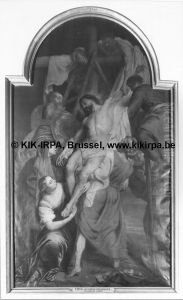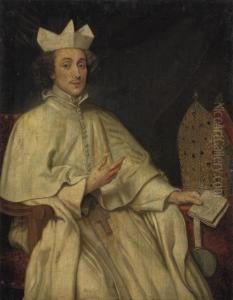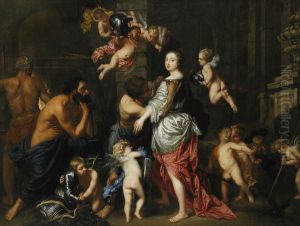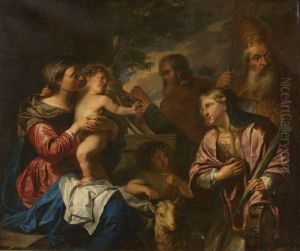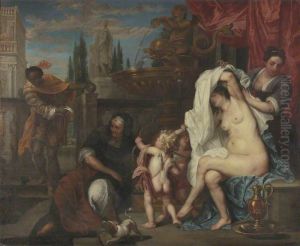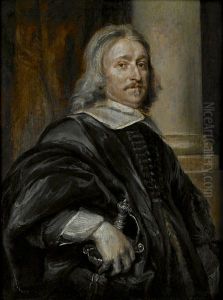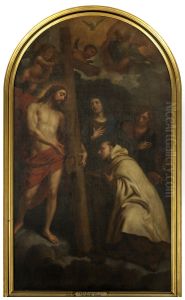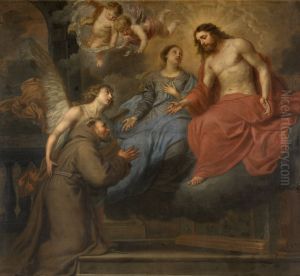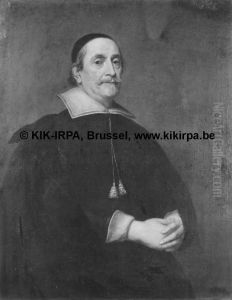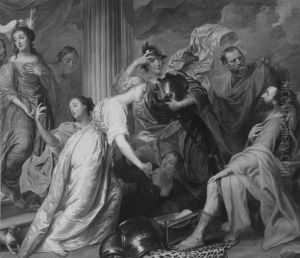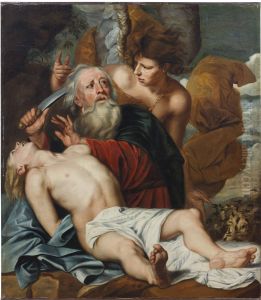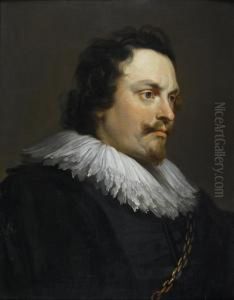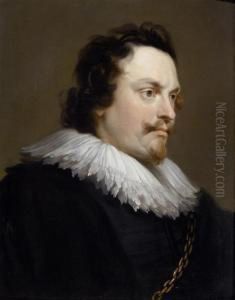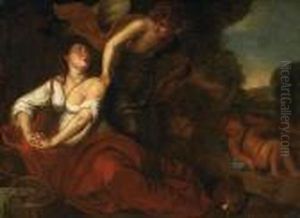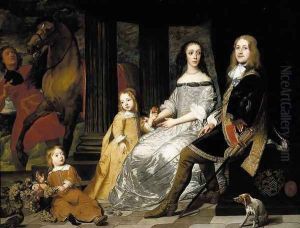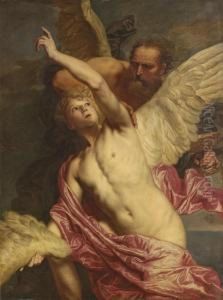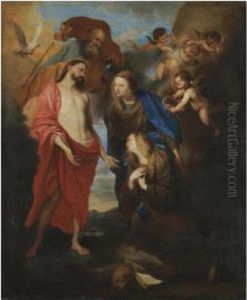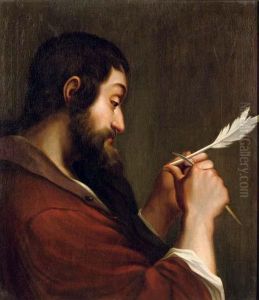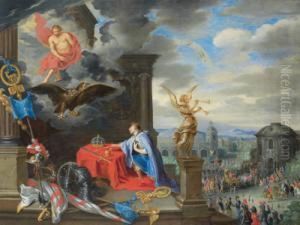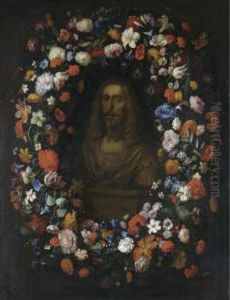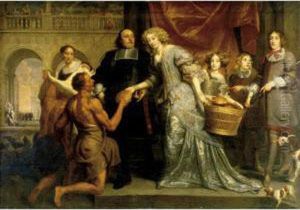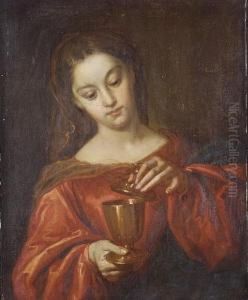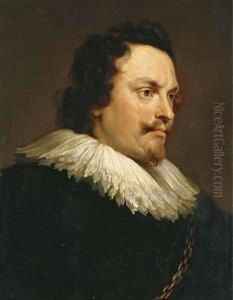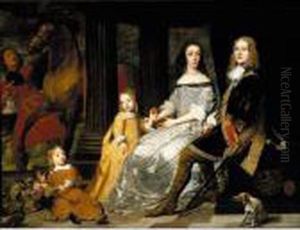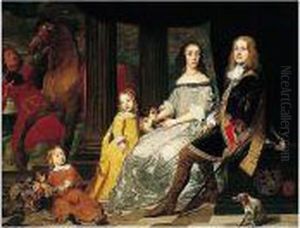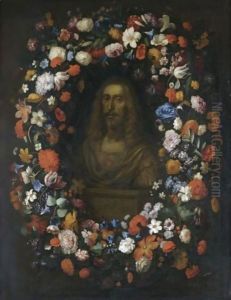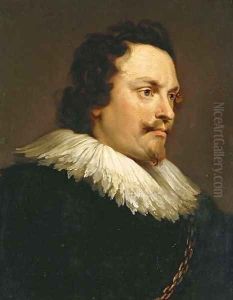Pieter Thijs Paintings
Pieter Thijs was a Flemish painter born in Antwerp in 1624. He is primarily known for his work in the Baroque style, which was prevalent in Europe during the 17th century. Thijs was a student of the renowned painter Jacob Jordaens, who was a leading figure in the Flemish Baroque movement and a close contemporary of Peter Paul Rubens. Under Jordaens' guidance, Thijs developed a style that emphasized dynamic compositions, rich coloration, and detailed depiction of textures.
Thijs' oeuvre mainly consists of religious and mythological scenes, portraits, and still lifes. Despite the dominance of religious and mythological themes in his work, Thijs was also adept at capturing the subtleties of human expressions and the intricacies of natural objects, which is evident in his still life paintings. His portraits are noted for their elegance and the ability to depict the social status and personality of the sitters.
Throughout his career, Thijs remained closely associated with Antwerp, where he was a respected member of the local Guild of Saint Luke. He played a significant role in the artistic community of the city, contributing to the development of the Baroque style in the Southern Netherlands. His works were sought after by the local aristocracy and wealthy merchants, which allowed him to enjoy a successful career.
Despite his accomplishments, Pieter Thijs' name is not as widely recognized today as some of his contemporaries. This is partly due to the overshadowing presence of giants like Rubens and Anthony van Dyck in Flemish art history. However, his contributions to the Flemish Baroque movement are undeniable, and his works continue to be studied for their technical mastery and artistic beauty.
Pieter Thijs passed away in Antwerp in 1677. His legacy lives on through his paintings, which can be found in various museums and collections around the world, showcasing the richness of the Flemish Baroque tradition. Thijs' art serves as a testament to the vibrancy and dynamism of 17th-century Flemish painting, reflecting the cultural and artistic achievements of his time.
